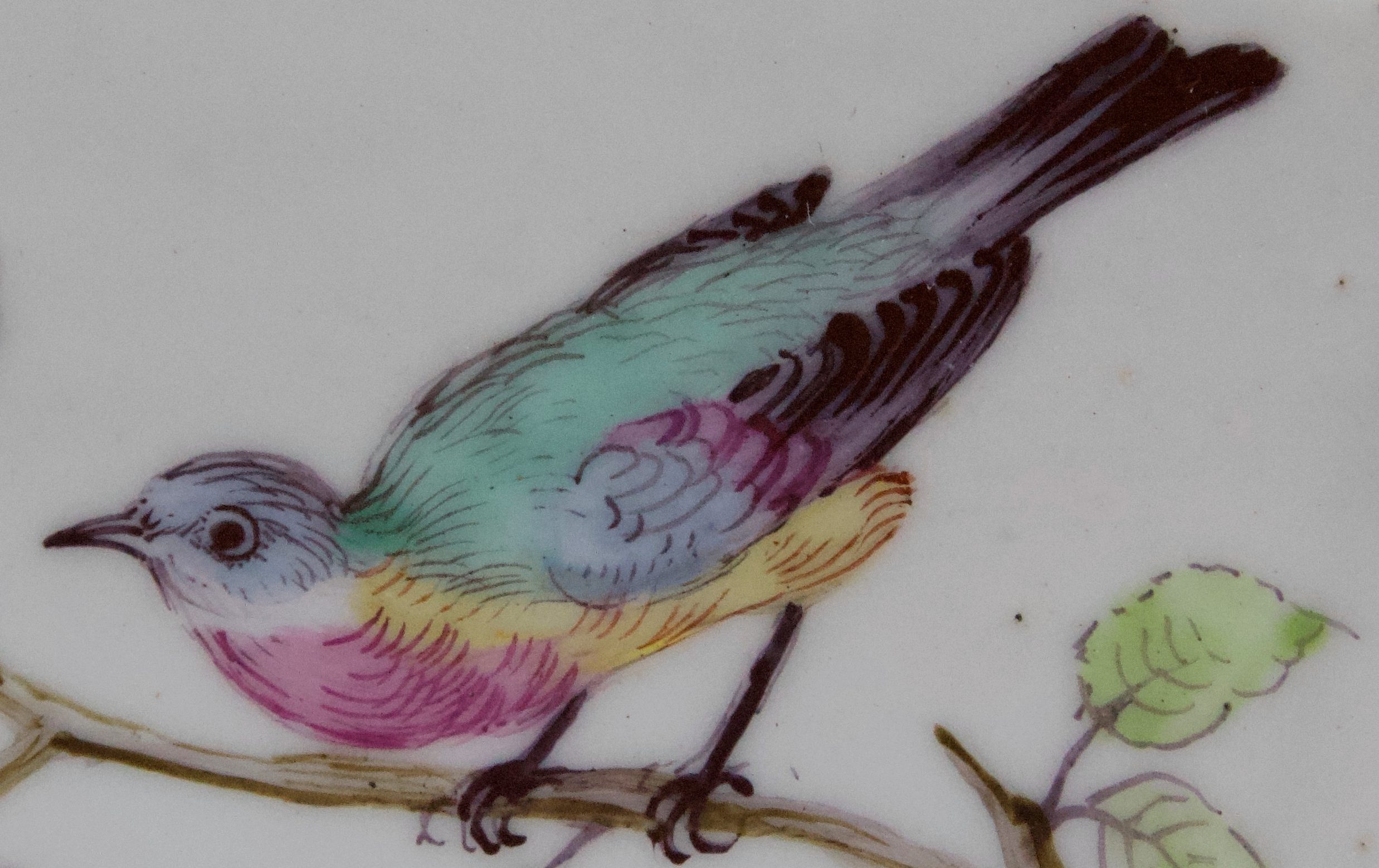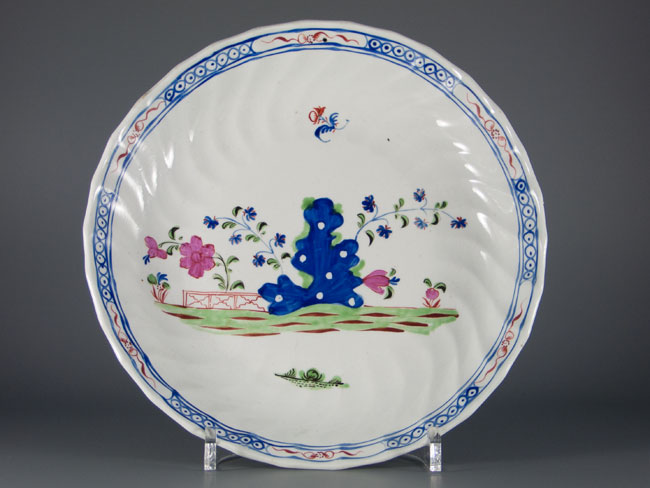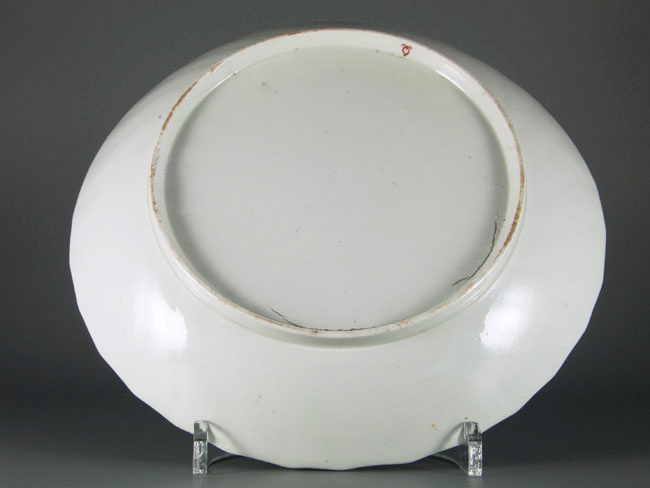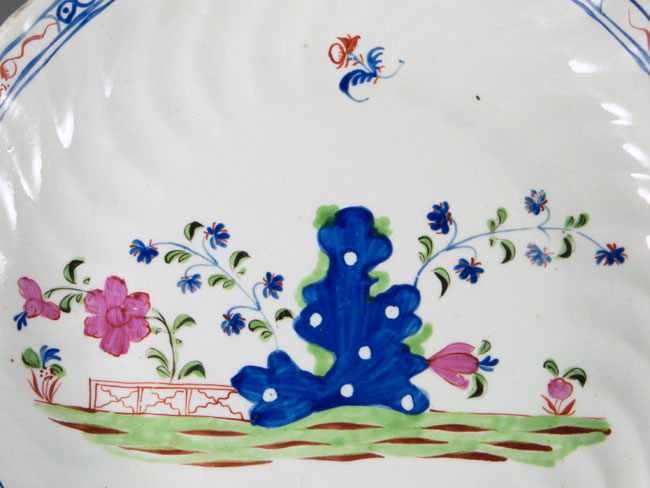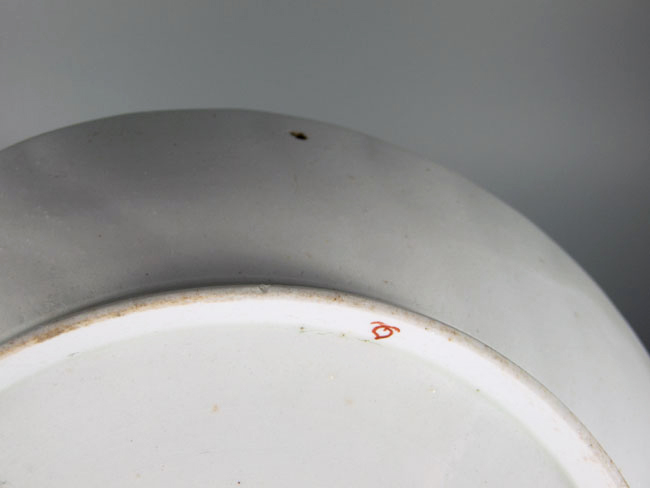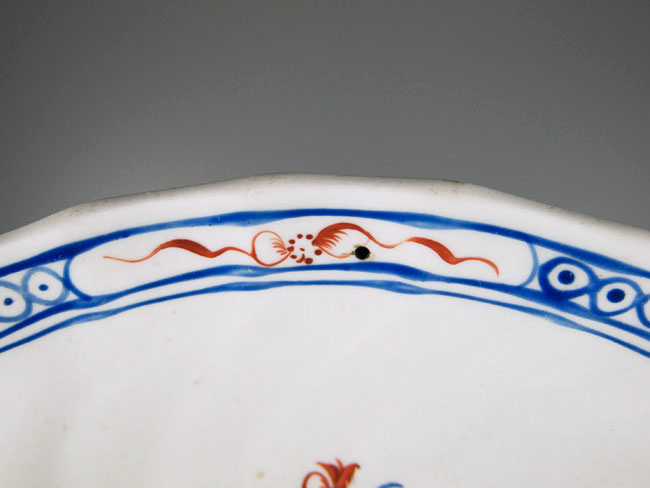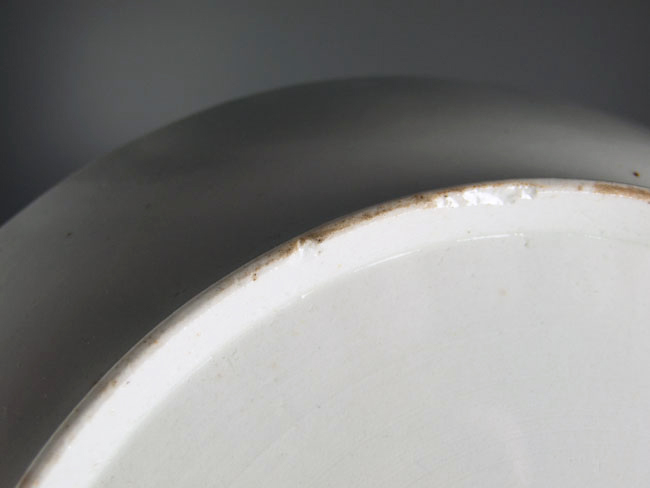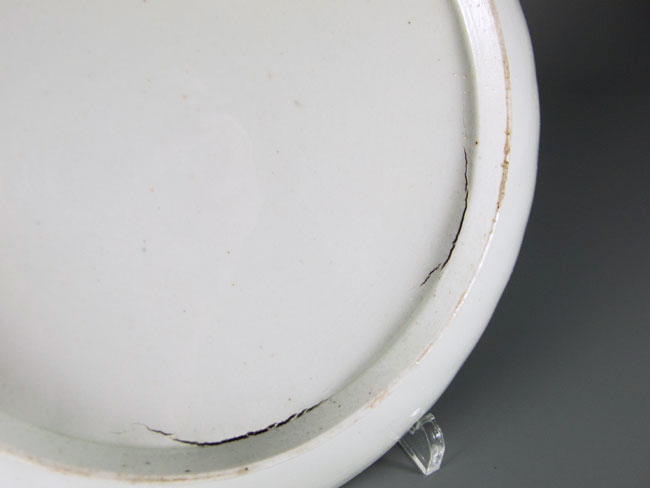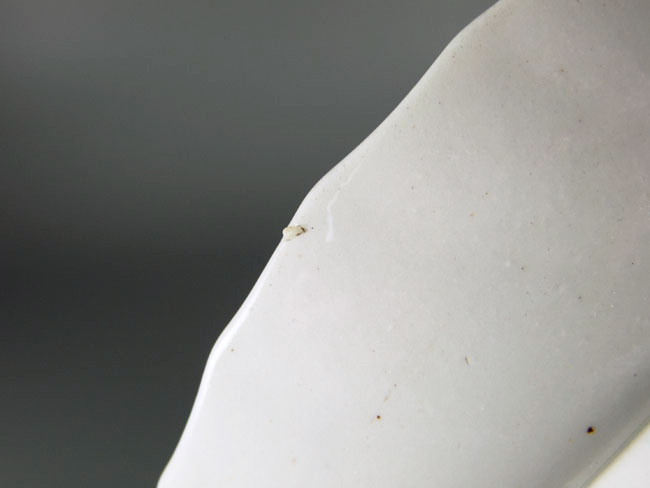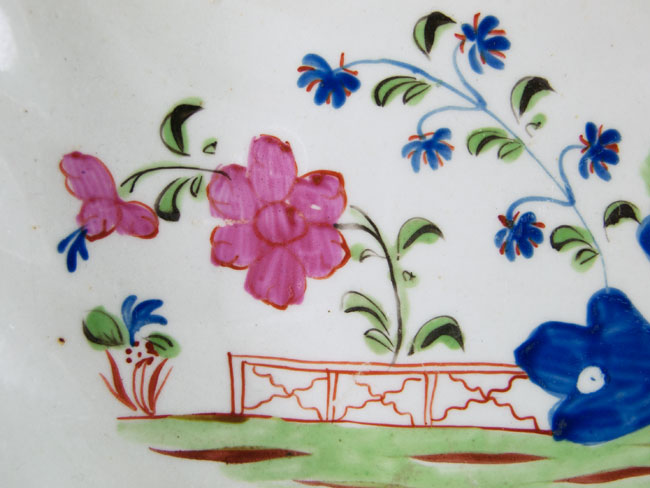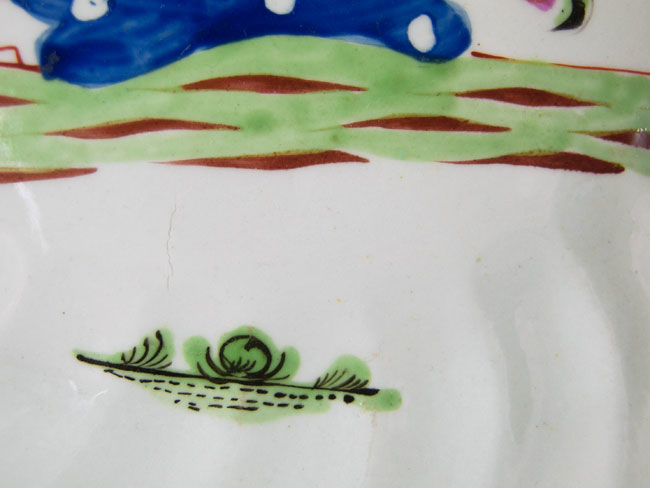A Bread and Butter or Cake Plate, Staffordshire, circa 1795-1800
The paste, glaze and body of this spiral fluted plate suggests that it was manufactured at the North Staffordshire works of Anthony and Enoch Keeling (formerly known as the unidentified Factory X).
In a Chinese garden, a large blue scholar’s rock stands beside a red fretwork fence. Trailing flowery branches issue from the rock, and a big pink peony can be seen beyond the fence. The border design is of alternate red ribbons and blue dotted circles.
Patterns such as this were based on contemporary Chinese export designs painted in famille rose colours.
Versions of this pattern were also created by New Hall and several other porcelain manufacturers based in Staffordshire.
A bread and butter or cake plate would originally have been ordered as part of a tea service.
Workman’s mark in red.
Rather charmingly, there is a very small drilled hole in the border at the top of the plate, presumably so that it could be displayed by hanging from a thread, like a piece of folk art.
Condition: Good – no damage or restoration. The paste is a greyish white and there is a greenish tinge to the pooled glaze on the underside. The foot rim has glazed faults, and firing cracks which occurred as the clay dried during firing. There is a very fine clay tear and also one or two tiny pieces of grit in the glaze. Firing flaws such as these provide plenty of information on the conditions and trials faced by the pioneers in early English porcelain manufacture.
Dimensions: Diameter 21.5 cm
A. & E. Keeling: Shapes and Patterns on Porcelain, Jean Barratt (2009).
New Hall & Its Imitators, David Holgate, Faber (1971).
